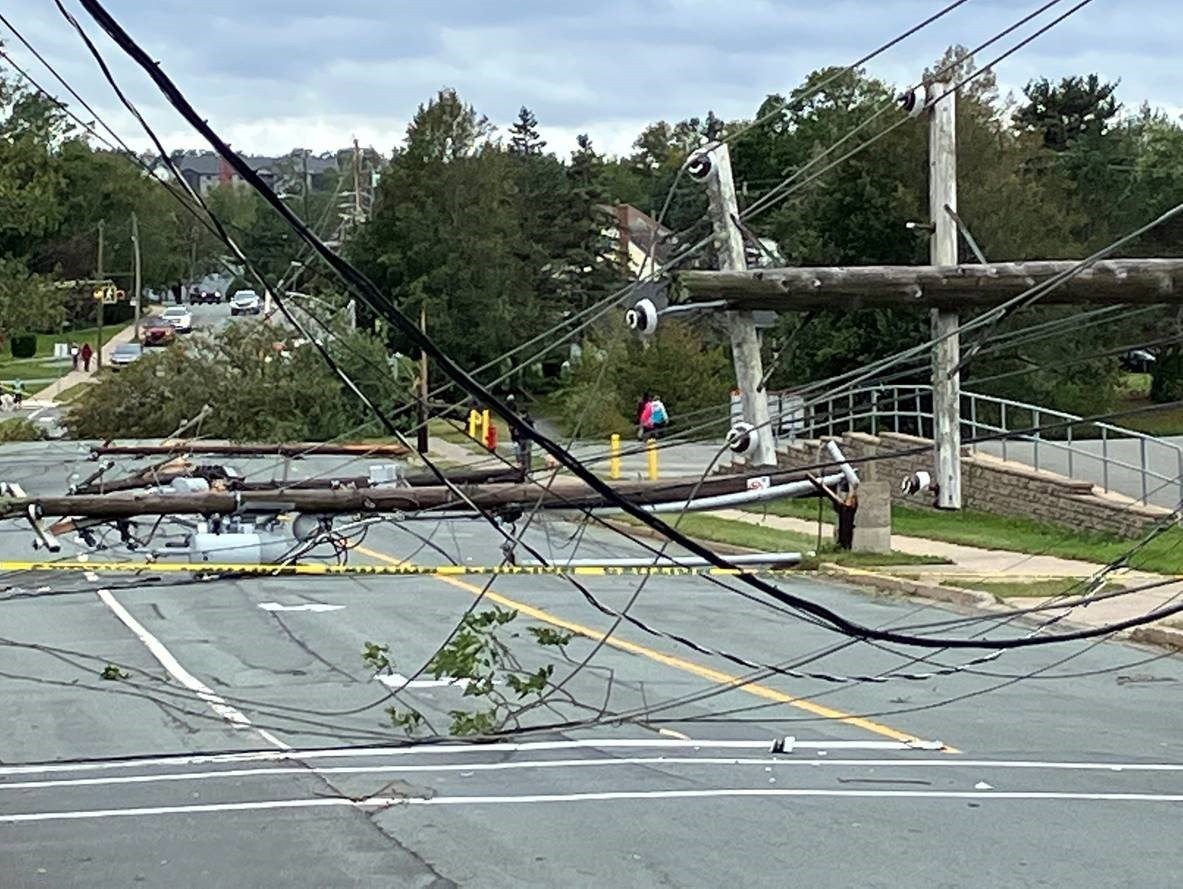Winds and storms
High winds and storms can cause significant damage to infrastructure and ecosystems. They can also cause important public safety issues and even put lives at risk.
Damage to structures and infrastructure

Image from Gouvernement Canada
High winds can cause significant damage to buildings, roofs and transportation infrastructure such as roads and bridges. They can tear off roofs, damage building facades, bring down trees and cause falling debris, resulting in significant infrastructure repair costs. For example, post-tropical storm Fiona in 2022 caused insurance losses of $846 million in eastern Canada.
Critical infrastructure and telecommunications infrastructure can also be damaged during high winds. The damage causes power outages and significant disruptions to daily operations and essential services.
Safety threat
High winds pose risks to people’s safety, which can lead to injuries or even serious accidents caused by flying objects. They can also disrupt traffic, creating dangerous travel conditions that reduce the ability to drive safely.
Environmental damage
Natural ecosystems are exposed to damage from high winds, such as damage to trees, impacting local fauna and flora. Strong winds can also cause significant damage to farmland and affect crops.
Storms and high winds also exacerbate erosion and cause flooding in coastal areas. Visit the page on coastal erosion and submersion to learn more.
Return to the projected changes
Identify solutions of adaptation